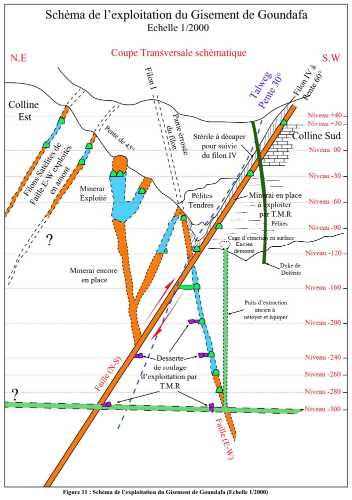Steadright Critical Minerals Advances Exploration at Historic Goundafa Mine in Morocco

Summary
Full Article
Steadright Critical Minerals Inc. is proceeding with exploration plans for the historic Goundafa Mine in Morocco, with contractor drilling companies currently being considered to verify high historical mineral values at the polymetallic site. The company has received interest from multiple drilling contractors and plans to begin exploration activities in December 2025 and early 2026 using a phased targeted drilling approach.
The Goundafa Mine contains conceptual resources estimated at 6.62 million tons with grades of 2.1% zinc, 1.8% lead, 1.5-2.1% copper, and up to 3.5 g/t gold in select zones. Particularly significant are the findings from underground sampling at Vein II near Gallery L, where recent XRF-measured grades showed strong potential for significant higher metal grades consistent with historic mining operations. According to the 2022 geological report https://www.newmediawire.com prepared for CMS, the concession holder, approximately 1.7 million tons are directly accessible through historic multi-level mine works.
The initial exploration phase will focus on surface mapping and drilling to verify current hypotheses about potential resources in Vein 1 adjacent to historic mining areas and extensions of these zones both laterally and at depth. Vein 1 was historically mined from 1926 to 1956, producing a reported 320,000 tons of material exceeding 10% grades and 400 g/t silver. The drilling program aims to provide a near-term resource estimate within close proximity of mine access points that could be available for early production.
Historical mine plans indicate that mining was conducted using drifting methods to extract ore and vertical openings to move mineralized material to surface for local processing. Many of these openings remain potentially available with minimal effort and cost, providing significant advantages for potential future production. The company's goal is to confirm historic resource estimates and formulate a National Instrument 43-101 compliant technical report on the project.
A second exploration phase would include mapping, drilling, and geophysics to assist in delineating Vein I, Vein IV, and Vein II bis along interpreted extensions both laterally and at depth. This phase would allow for intermediate to wide-spaced drilling for resource expansion further afield on surface and underground, based on results from prior mapping and geophysical surveys.
The Goundafa Mine operated from 1923 until 1956, with operations ceasing due to political changes following Moroccan independence rather than economic factors. This distinction is significant as it suggests the mine's closure was not related to resource depletion or economic viability. While access adits and shafts have been closed for safety purposes and prevention of illegal mining, the current owners indicate that access can be quickly achieved through cooperation, with intermittent inspections confirming that mine infrastructure remains suitable for future exploration and potential production.
The potential revival of the Goundafa Mine represents significant implications for critical mineral supply chains, particularly given the growing global demand for copper, zinc, and precious metals. The project's historical production records and accessible infrastructure position it as a candidate for relatively rapid development compared to greenfield mining projects. Success in confirming and expanding the conceptual resources could contribute to global metal supplies while supporting economic development in the El Haouz province region of Morocco.

This story is based on an article that was registered on the blockchain. The original source content used for this article is located at NewMediaWire
Article Control ID: 267001